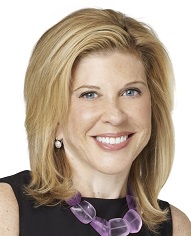As a native New Yorker, I’m proud to see the recent headlines in New York where the minimum age for buying cigarettes has just been increased from 18 to 21, making tobacco products a lot harder for young people to purchase.
It’s an honor to hail from a city that has such a long history of taking courageous approaches to this issue – and this apple doesn’t fall far from the tree. Although I’ve just moved to Washington, D.C., I’m still a New Yorker at heart and am happy that at Legacy®, where I’ve recently been appointed president and CEO, we also set big goals to effect great change.
The public health community knows what works when it comes to shifting social norms. A comprehensive approach with bold and innovative anti-tobacco counter-marketing campaigns, policy changes such as increased taxes and clean indoor air laws, as well as local on the ground efforts are critical. And we must continue to keep the pressure on as our work is far from done.
About 3,500 young people try a cigarette for the first time every day, and more than 900 go on to become daily smokers. Behind these numbers are real kids—our daughters, sons, grandchildren, friends, and neighbors. No parent wants their child to use tobacco, but despite our best efforts and with all tobacco products and new ones that are becoming increasingly popular, it continues to happen far too often.
In September, findings from the National Youth Tobacco Survey, detailed in CDC’s Morbidity and Mortality Weekly Report, found that the percentage of U.S. middle and high school students who have ever used e-cigarettes more than doubled from 2011 to 2012.
In August of this year, a new study detailed the pervasiveness of little cigars and cigarillos in African-American neighborhoods. These products are not yet held to the same federal regulations as cigarettes. They attract our kids with candy flavorings like strawberry and chocolate, and are just as harmful as cigarettes. And late last month, the U.S. Centers for Disease Control and Prevention released concerning research from its 2012 National Youth Tobacco Survey. It found that while combustible cigarette use showed a statistically insignificant decline, cigar, e-cigarette and hookah use is up. The increase in usage of these products, especially among vulnerable youth populations like African Americans, is alarming and underscores why it is so critical for the U.S. Food and Drug Administration (FDA) to release the deeming regulation and assert jurisdiction on all tobacco products.
As we await an announcement by the FDA as to whether they will regulate e-cigarettes, the tobacco and e-cigarette industries are free to fill the void by advertising these products without sufficient scrutiny. Not surprisingly, the ads are becoming increasingly ubiquitous across traditional and digital media. As someone who has devoted my career to effective behavior change campaigns, it eerily reminds me of cigarette promotions of yore. There are serious questions about the quality control of e-cigarettes, the long-term health effects of use, efficacy as a quit smoking aide, and their appeal as a potential gateway device to traditional tobacco use. While the science base is still limited as to the health risks associated with e-cigarette usage, we do know that anything that lowers the bar to initiate young people into nicotine addiction — including low price points — is a huge red flag for all of us who put public health ahead of corporate profits.
New York City now takes the title for having adopted the strictest limits on tobacco purchases of any major American city, and we hope the saying holds true, “as goes New York, so goes the nation.”
Robin Koval
President and CEO
Legacy®
